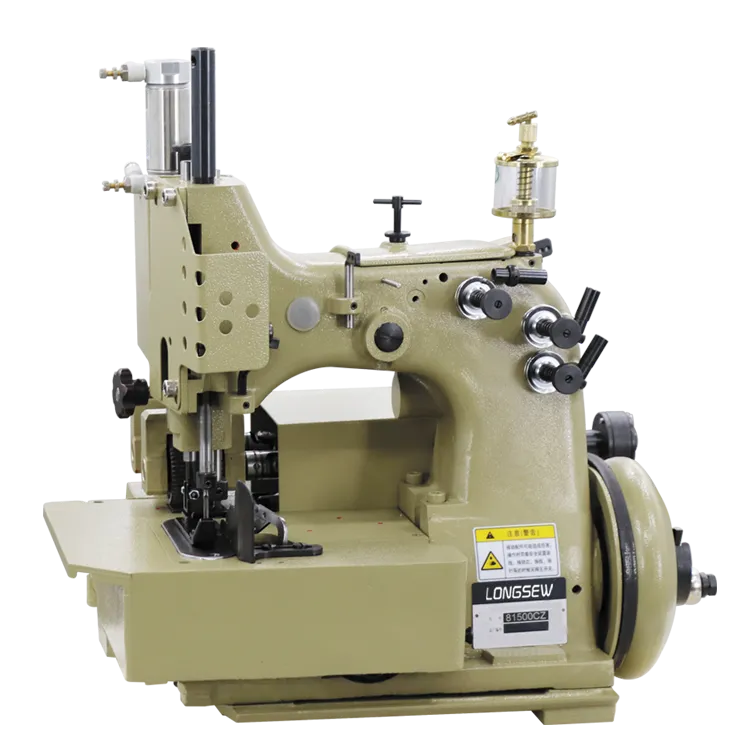single needle lockstitch sewing machine
The Versatility of Single Needle Lockstitch Sewing Machines
In the world of textile and garment manufacturing, the single needle lockstitch sewing machine holds a paramount position. Renowned for its reliability, precision, and simplicity, this machine has become a staple in both industrial and home sewing environments. Understanding its functionality, applications, and maintenance can significantly enhance the sewing experience for both amateurs and professionals alike.
Functionality
At the heart of the single needle lockstitch sewing machine is its mechanism, which uses a single needle and a bobbin to create a lockstitch. This type of stitch is characterized by its unique capability to secure the fabric layers tightly together. The needle penetrates the fabric, bringing the upper thread down, while the bobbin thread loops around it, forming a stitch that is strong and invisible from the front. This simple yet effective design allows for various sewing techniques, such as straight stitching, zigzag stitching, and ornamental designs.
The single needle lockstitch machine typically allows for adjustable stitch lengths, giving users the flexibility to create varying seam types
. Whether one is working on delicate fabrics or heavy materials, this machine can easily be configured to meet different sewing requirements.Applications
The applications of single needle lockstitch sewing machines are widespread. In commercial settings, they are predominantly used for stitching garments, assembling textile products, and finishing edges. Clothing manufacturers favor these machines for their ability to create strong seams that withstand the rigors of wear and tear. From fashion apparel to work uniforms, the single needle lockstitch is essential for producing high-quality garments.
single needle lockstitch sewing machine

In home sewing, the machine caters to hobbyists and those involved in crafting. It allows users to take on a variety of projects, including home décor items, quilts, and custom fashion pieces. The ability to execute precise stitches makes it ideal for detailed work that requires finesse and accuracy.
Maintenance and Care
To ensure optimal performance, routine maintenance of the single needle lockstitch sewing machine is crucial. Regular cleaning is necessary to remove lint and dust, which can accumulate during use. Lubrication of moving parts will help to reduce friction and wear, ensuring that the machine operates smoothly. Furthermore, checking needle conditions regularly is vital; dull or bent needles can cause stitching errors and fabric damage.
Additionally, users should familiarize themselves with the machine's manual to understand its specific maintenance requirements and troubleshooting tips. This proactive approach not only prolongs the machine's lifespan but also aids in instantly addressing any issues that may arise during sewing.
Conclusion
The single needle lockstitch sewing machine is an invaluable tool in the realm of sewing, combining simplicity with versatility. Its powerful stitching capability, along with its extensive range of applications, makes it suitable for both industrial and domestic use. Whether you are a seasoned seamstress or a novice, mastering this machine will undoubtedly elevate your sewing skills and expand your creative possibilities. As you explore the world of fabric and thread, the single needle lockstitch machine will be your reliable companion in bringing your visions to life.
-
Zigzag Sewing MachineNewsMay.12,2025
-
Single Needle Sewing MachineNewsMay.12,2025
-
Overlock Sewing Machine PriceNewsMay.12,2025
-
Heavy Duty Industrial Sewing MachineNewsMay.12,2025
-
FIBC Sewing MachineNewsMay.12,2025
-
Cylinder Bed Sewing MachineNewsMay.12,2025
-
Revolutionizing Sewing with CNC TechnologyNewsMar.28,2025





























